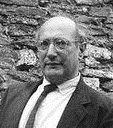Mark Rothko
(1903-1970)

Mark Rothko was a Jewish painter.
He was born Marcus Yakolevich Rothkowitz in Daugavpils (Dvinsk), Russia (now Latvia) and emigrated to the United States in 1916.
His work concentrated on basic emotions, often filling the canvas with very few intense colours, with little immediately-apparent detail. In this respect, he can also be considered to presage the color field painters (see: Helen Frankenthaler). Although respected by other artists, Rothko remained in relative obscurity until 1960, supporting himself by teaching art.
In 1958, Rothko was commissioned by Philip Johnson to paint a series of murals for the Four Seasons restaurant in the Seagram Building in New York, a project he worked on for most of a year. Ultimately, Rothko was not happy having his paintings as the backdrop to gourmet dining, so he gave a set of nine of the maroon and black paintings to the Tate Gallery where they are on permanent display in an installation designed by Rothko.
In 1967, Rothko again collaborated with architect Philip Johnson on a church in Houston, Texas, contributing fourteen related works in an installation setting. The church has become known as “The Rothko Chapel.” Numerous other works are scattered in museums throughout the world.
After a long struggle with depression, Rothko committed suicide by cutting his wrists in his New York studio on February 25, 1970. Following his death, the settlement of the Rothko estate became the subject of a famous court case.
Sources: Wikipedia


